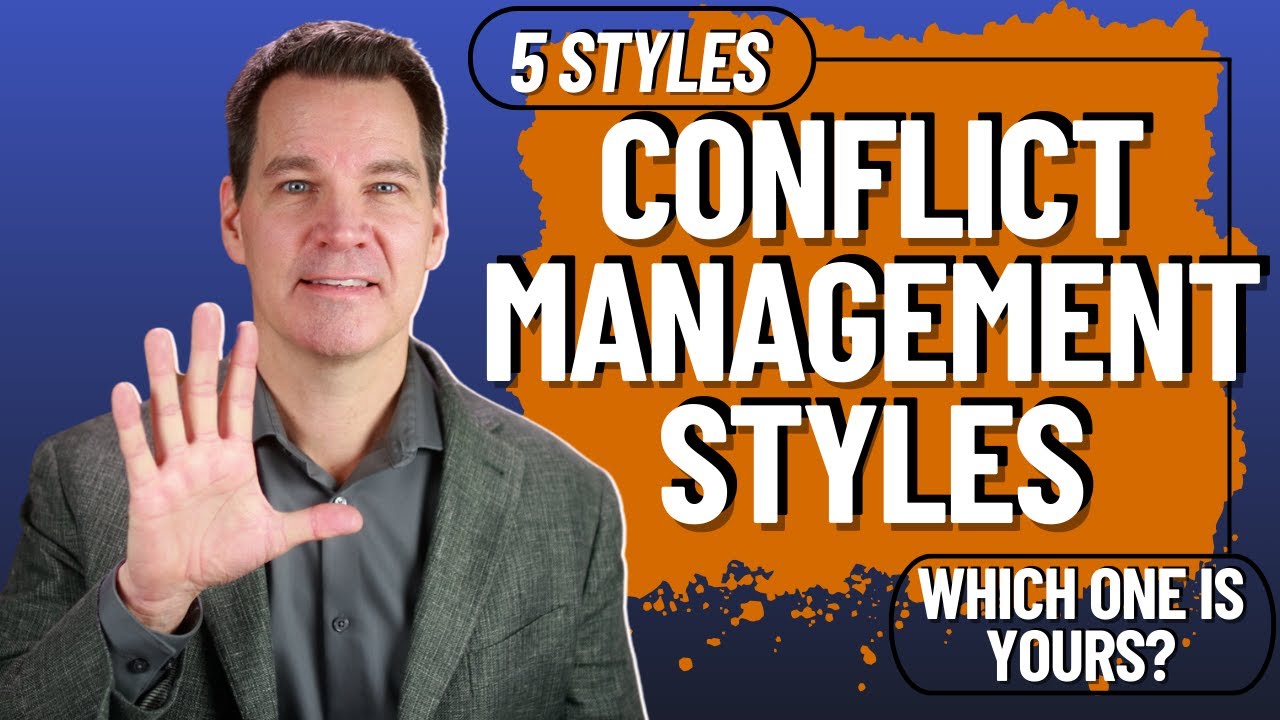5 Ways Of Approaching Disagreements And Conflict | Thomas Kilmann Conflict Model
Summary
TLDRThis video explores five different conflict resolution styles: avoiding, accommodating, enforcing, compromising, and collaborating. The speaker emphasizes the importance of being flexible in conflict situations and choosing the most appropriate strategy based on the circumstances. While each style has its pros and cons, understanding when to apply each one can lead to more effective communication and healthier relationships. The video encourages viewers to reflect on their default conflict style and consider trying new approaches for better outcomes in the future.
Takeaways
- 😀 Flexibility is key when responding to conflicts, as there is no one-size-fits-all approach.
- 😀 Conflict styles are based on two axes: cooperativeness (focusing on others' needs) and assertiveness (focusing on one's own needs).
- 😀 There are five conflict styles: avoiding, accommodating, enforcing, compromising, and collaborating.
- 😀 Avoiding confrontation can save energy and time but doesn't resolve the underlying conflict.
- 😀 Accommodating is useful for maintaining relationships, especially when the other person’s needs or expertise are more important in a situation.
- 😀 Enforcing involves asserting one's own needs even if it means disregarding the other person's desires; it can be necessary in emergencies but harms relationships if overused.
- 😀 Compromising means both sides give up something to reach an agreement, but it might not fully satisfy either side’s needs.
- 😀 Collaborating focuses on finding a win-win situation where both parties’ needs are met, often requiring open communication and creativity.
- 😀 Avoiding passive aggression is essential—avoiding conflict should not involve indirectly confronting the other person through behaviors like ignoring them.
- 😀 Reflecting on your most-used conflict styles can help you assess their effectiveness and consider trying other approaches for better outcomes.
Q & A
What is the main message of the video?
-The main message of the video is the importance of being flexible in how we approach conflicts. Rather than sticking to automatic, habitual responses, we should assess each situation and choose the most suitable conflict resolution style.
Why is it important to reflect on our conflict resolution styles?
-Reflecting on our conflict resolution styles helps us recognize our tendencies and make sure we're not relying on the same strategy in every situation. This self-awareness allows us to adapt and choose the most effective approach for each conflict.
What are the two axes used in the model of conflict resolution?
-The model uses two axes: the 'axis of cooperativeness', which refers to how much we focus on the other person's needs, and the 'axis of assertiveness', which refers to how much we focus on our own needs.
What is the difference between avoiding a conflict and avoiding a confrontation?
-Avoiding a confrontation means avoiding the direct conflict interaction, but the underlying conflict isn't resolved. This can give time to think or prevent escalation, but it doesn’t solve the issue itself.
What situations are best suited for the avoiding conflict style?
-The avoiding style is best used when the issue is minor, when emotions are too high to think clearly, when a break is needed, or when you're unsure how to proceed. It’s also useful when you want to avoid adding stress to a situation or when you're not in the right emotional state to engage.
When is the accommodating style appropriate?
-The accommodating style is appropriate when the other person's needs are more important, when you're deferring to someone with more expertise, or when you want to preserve a relationship. It’s particularly useful in situations where maintaining harmony is more important than addressing the issue.
What is the potential downside of the enforcing (assertive) conflict style?
-The downside of the enforcing style is that it can strain relationships if overused, as it focuses solely on asserting one's own needs and disregards the other person's interests, which can lead to tension and resentment.
How does compromising differ from collaborating in conflict resolution?
-Compromising involves both sides giving up something to meet in the middle, while collaborating seeks a win-win solution where both parties fully meet their needs. Compromising often means settling for less, while collaborating aims to achieve more than both parties initially expected.
What is an example used to explain the difference between compromising and collaborating?
-An example is two people wanting the same orange. A compromise would be cutting it in half, so both get some. However, through collaboration, they could discover that one needs the peel and the other needs the juice, allowing both to fully satisfy their needs without compromising.
Why is it important to differentiate between compromising and collaborating?
-Differentiating between compromising and collaborating helps us avoid settling for less when a better, more mutually beneficial solution may be possible. Collaboration encourages open communication to find ways to fully meet both parties' interests, rather than just meeting halfway.
Outlines

此内容仅限付费用户访问。 请升级后访问。
立即升级Mindmap

此内容仅限付费用户访问。 请升级后访问。
立即升级Keywords

此内容仅限付费用户访问。 请升级后访问。
立即升级Highlights

此内容仅限付费用户访问。 请升级后访问。
立即升级Transcripts

此内容仅限付费用户访问。 请升级后访问。
立即升级5.0 / 5 (0 votes)






